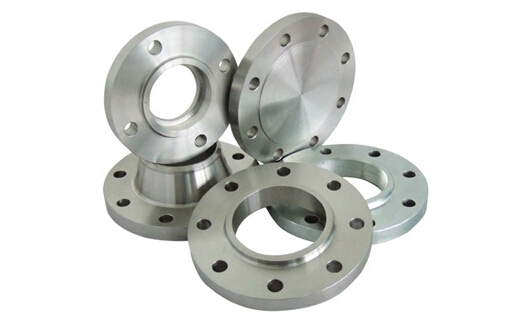Forged Flanges and Related Production Processes
Forged flanges have the better mechanical properties than any other kinds of flanges. They use pipe billets as raw materials. They are constantly hammered after cutting to eliminate defects of steel ingots like segregation and incompact structure. They use carbon steel, alloy steel and stainless steel as main materials. The main anticorrosion methods include oil coating and galvanization. Due to good pressure-resistant and temperature-resistant properties, they are suitable for high-pressure and high-temperature working environment.
The production processes of forged flanges fall into two kinds: forging and casting. Following are the advantages and disadvantages of the two processes:
(1) The flanges after casting process have precise dimension, small processing volume and low cost, but have defects, like pores, cracks and impurities and relatively poor streamlined structure.
(2) Forged flanges are easier to get rusty but have better compact and streamlined structure and mechanical properties than cast flanges.
(3) Improper forging process will result in large or inhomogeneous grains, hardened cracks and higher forging cost than casting process.
(4) Forgings have better shearing and tensile resistance than castings.
(5) Castings are more easily produced in various complicated forms with relatively low cost.
(6) Forgings have the advantage of being homogeneous in internal structure without unfavorable defects like pores and impurities.
The production processes of forged flanges fall into two kinds: forging and casting. Following are the advantages and disadvantages of the two processes:
(1) The flanges after casting process have precise dimension, small processing volume and low cost, but have defects, like pores, cracks and impurities and relatively poor streamlined structure.
(2) Forged flanges are easier to get rusty but have better compact and streamlined structure and mechanical properties than cast flanges.
(3) Improper forging process will result in large or inhomogeneous grains, hardened cracks and higher forging cost than casting process.
(4) Forgings have better shearing and tensile resistance than castings.
(5) Castings are more easily produced in various complicated forms with relatively low cost.
(6) Forgings have the advantage of being homogeneous in internal structure without unfavorable defects like pores and impurities.

Related News
- Stamped Steel Slip-On Flanges
- Design and Finite Element Analysis of Anchor Flanges for Oil & Gas Pipelines
- Forming and Manufacturing Technology of Anchor Flanges
- Structure and Materials of Anchor Flanges
- Flanges for Pressure Vessels
- An Introduction to Socket Welded Neck Flanges
- Heat Treatment & Mechanical Properties of ASTM A350 LF3 Flanges (Part Two)
- Heat Treatment & Mechanical Properties of ASTM A350 LF3 Flanges (Part One)
- High-pressure Wellhead Device Valve Body End Threaded Flanges
- Threaded Flanges at the End of Valve Bodies of High-pressure Oil & Gas Wellhead Devices

